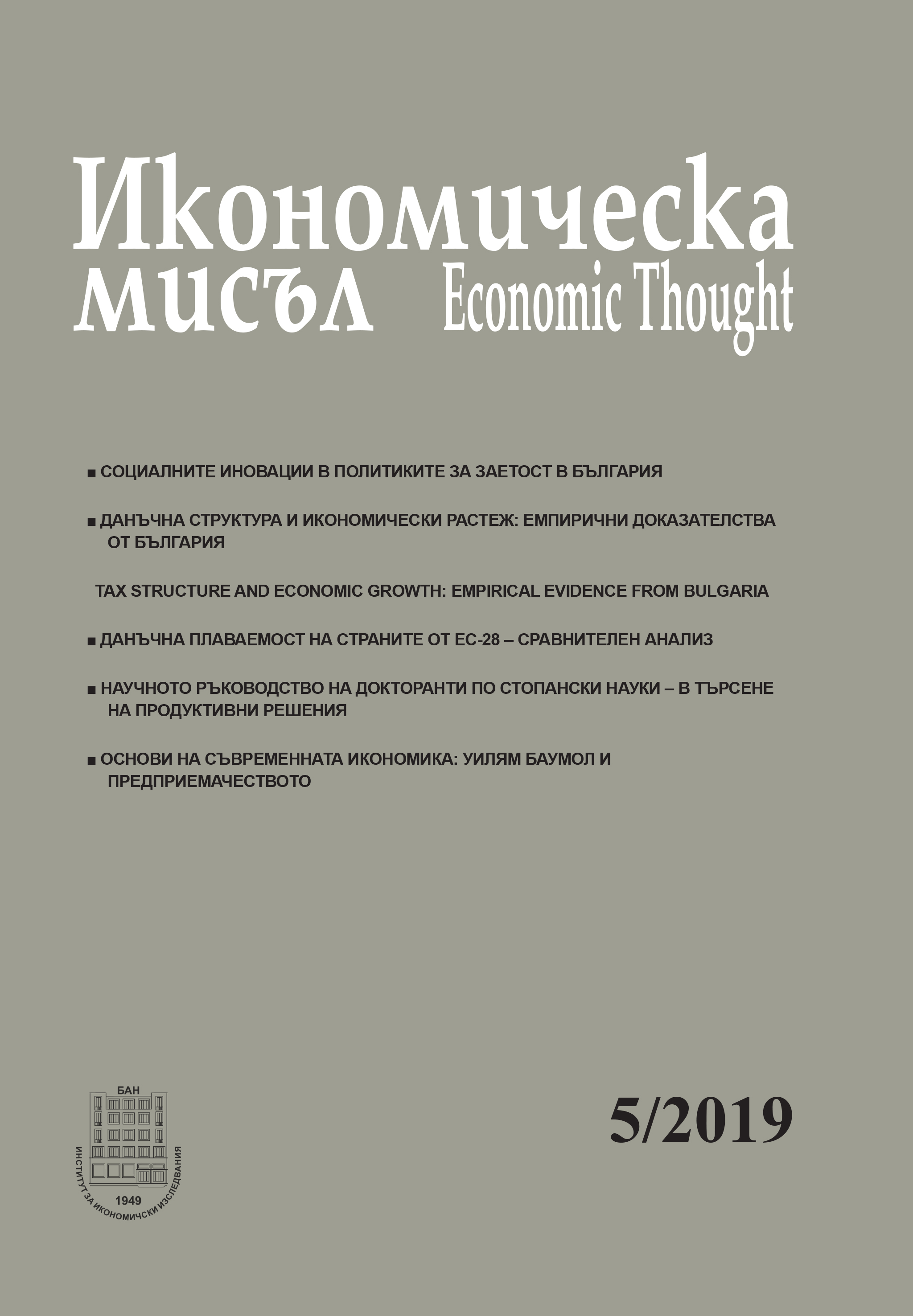Данъчна плаваемост на страните от ЕС-28 – сравнителен анализ
Tax buoyancy of the EU-28 countries – a comparative analysis
Author(s): Martina YakovaSubject(s): Economy, National Economy, Public Finances
Published by: Институт за икономически изследвания при Българска академия на науките
Keywords: tax buoyancy; direct taxes; indirect taxes; tax system
Summary/Abstract: Empirical evidence of tax buoyancy is presented as an assessment of the effectiveness of the tax system. The buoyancy analysis aims to track whether tax revenues follow economic growth and at what rate. The survey includes the EU-28 countries, with data divided into three panels: consumer, hybrid and income tax systems. The time period from 1999 to 2015 is covered. An autoregressive distributed lag model is used in order to establish that in the hybrid tax system the short-term and long-term tax buoyancy is the highest, meaning that this type of tax system is the most effective and marks the highest increase in economic growth.
Journal: Икономическа мисъл
- Issue Year: 2019
- Issue No: 5
- Page Range: 59-73
- Page Count: 15
- Language: Bulgarian

